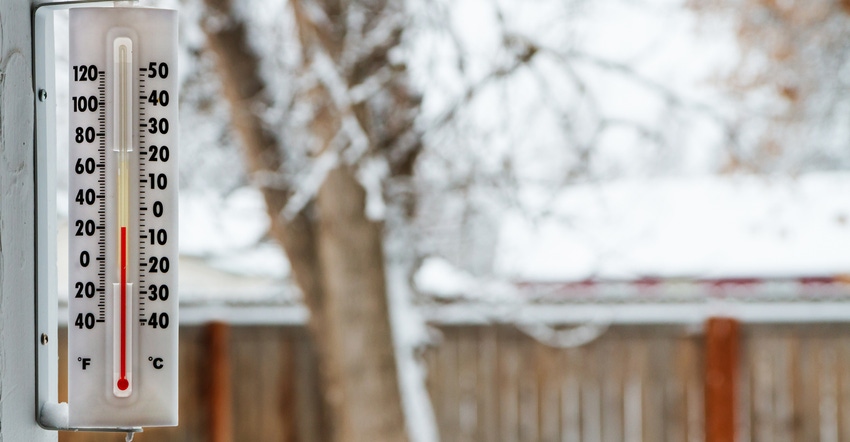
Until combines roll in late May or early June, Mother Nature is in control of the Kansas wheat crop. And she’s already thrown a freezing weather tantrum our way.
The Kansas wheat crop endured sustained cold air temperatures across much of the state April 20 to 22, coupled with snowfall and precipitation. The USDA’s Kansas Crop Progress and Condition Report said those days of snow and rain brought the topsoil moisture supplies to 76% adequate, and the subsoil moisture to 72% adequate. This is on top of the fifth-wettest March since 1895, according to the Kansas State University March 2021 Ag Climate Update. The spring precipitation events have gone a long way to improve drought conditions in Kansas.
However, farmers are out scouting fields to see if their wheat weathered the freezing temperatures enough to be able to use that moisture.
Growth stage
As the crop is maturing, the weather is playing a big role in what will finally hit the bins. According to K-State’s April 22 Agronomy eUpdate, there are many factors that influence the potential for freeze injury to wheat:
• Stage of the crop. K-State Extension personnel report the wheat growth stage ranges from upright tillers to the first node in the northwest, to the first node to flag leaf emergence in central and southwest, to flag leaf emergence to boot in southeast Kansas. The further along the wheat is in development, the greater the vulnerability to freeze injury.
• Duration of cold temperatures. The Kansas Mesonet reports that air temperatures dipped below the 24-degree-F threshold for wheat as long as 18 hours in the northwest, up to 4 hours in the southwest and up to 5 hours in the northeast. That could cause damage to fields at first node of development or further along.
• Snow cover. Snow is a buffer for freezing temperatures, but the variable amounts of snow (0.6 to 7.5 inch) across the state on April 20 quickly melted, and the snow wasn’t there for the sustained cold on April 21 and 22.
• Soil temperatures. Soil can buffer the freezing air conditions, but only if the growing point is under or just near the surface. North central and northwest Kansas saw sustained soil temperatures above 37 degrees during the week, and the crop is just at the first node stage. South-central and southeast fields were further along and likely didn’t get soil buffering benefits.
Based on these factors, K-State Extension personnel estimate that parts of southwest, central and northwest Kansas are at highest risk for freeze injury from the cold snap of April 20 to 22. There was some risk of freeze damage to more advanced wheat in the southeast. The risk decreases moving to north-central and northeast Kansas because the crop is still behind in development, and the temperatures did not get as cold.
Wheat streak mosaic virus
Because of drier conditions last fall in much of central Kansas, the Kansas Association of Wheat Growers reports that a lot of volunteer wheat did not get controlled. That left a green bridge for the wheat curl mite, which is the vector for wheat streak mosaic virus (WSMV).
“We are seeing a higher number of WSMV samples than what we typically see this time of year,” says Kelsey Andersen Onofre, K-State plant pathologist. “WSMV is showing up early this year in western, west-central and also central counties — Barton, McPherson and Saline counties. We’re really keeping an eye on that right now.” The earlier in the crop’s growth stage it’s infected, the worse the symptoms can be, and that could lead to yield loss. Wheat that is infected at a later point in the season or has some resistance to the wheat curl mite may suffer less yield loss, Onofre explains.
Kansas wheat condition report
According to KAWG, at its board meeting April 8, board members reported that the condition of the crop is variable, depending on planting date. Members also reported that earlier-planted wheat seems to be in good condition.
“The late-planted wheat has been slow to grow and has low tiller counts,” says Justin Knopf, KAWG president, who farms in Saline County.
Romulo Lollato, K-State wheat production specialist, says September had considerable precipitation, which allowed early-planted wheat to emerge and put in a lot of development in the fall.
February’s arctic temperatures, combined with limited snow cover and drought conditions, were a concern for wheat farmers. But Lollato says he told the KAWG board that the soil temperatures never got to single digits, and the crop’s crown was at the soil level at that time.
“By late March and early April, we were better able to assess how the crop was faring,” Lollato says he told the board members. “The small wheat in March that was later-planted is showing some spring tillering and green leaves.”
Now that the thermostat has started ticking higher, the wheat crop is expected to develop quickly. Moisture in March, Lollato says he told KAWG board members, helped move fertilizer into the root zone, and the wheat will start to use that for stem elongation.
Kansas Wheat and Kansas State University Department of Agronomy contributed to this article.
About the Author(s)
You May Also Like






